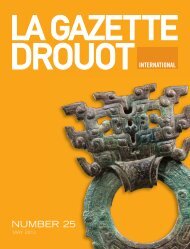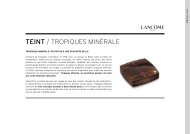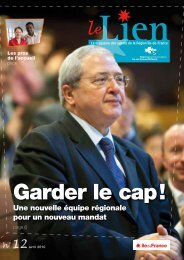Art Market Magazine - Visit zone-secure.net
Art Market Magazine - Visit zone-secure.net
Art Market Magazine - Visit zone-secure.net
You also want an ePaper? Increase the reach of your titles
YUMPU automatically turns print PDFs into web optimized ePapers that Google loves.
in Paris. Admired by some as an extraordinary dealer<br />
who saved many inestimable works from destruction,<br />
considered by others as a trafficker in antiques and<br />
even a plunderer of treasures, C.T. Loo played a key<br />
role in the dissemination of Chinese art to many<br />
major collections. The book by Géraldine Lenain, to<br />
be published in May by Philippe Picquier, pays tribute<br />
to the dealer in an uncompromising portrait that<br />
brings out all his ambivalence.<br />
A man with a <strong>net</strong>work<br />
Twenty years separated C.T. Loo's first sale in Paris in<br />
1908 from the inauguration of the Pagoda, the<br />
dazzling symbol of his rise. Twenty long years, during<br />
which as a humble Chinaman from Lujiadou, he<br />
laboriously climbed the social ladder to finally rub<br />
shoulders with the wealthiest men of the time, like<br />
Rockefeller, Pillsbury, Morgan and Frick. For Loo, 1928<br />
was decidedly the year of his apotheosis, when he<br />
was made a Chevalier of the Légion d’Honneur in<br />
recognition of his generous donations to French<br />
museums. To become the greatest dealer in Chinese<br />
art, he made full use of his <strong>net</strong>work of contacts, and<br />
most of all his friendship with Zhang Jinjiang and the<br />
nationalists. This notably enabled him to have a huge<br />
number of objects shipped out of his country, despite<br />
the restrictive laws voted in during 1913 and 1914.<br />
But the dealer's genius did not only lie in that<br />
direction. He also anticipated the development of<br />
tastes, replacing the traditional Chinese porcelain of<br />
the 18th and 19th centuries with objects little-known<br />
until then, thus initiating new areas for collecting<br />
such as frescoes, sculptures and ancient bronzes.<br />
He was responsible for Dr. Gieseler's fabulous collection<br />
of archaic jades, donated to the Musée Guimet,<br />
and he was the one who sold Charles Lang Freer<br />
some exceptional Buddhist paintings, now adorning<br />
his museum in Washington. On top of that, Mr. Loo<br />
was never content to be just a middle-man, creaming<br />
off comfortable margins on the way: he provided his<br />
The Pagode Paris, exterior with its typical chinese red color<br />
and architectural features.<br />
DISCOVERY THE MAGAZINE<br />
Cover of the book by Géraldine Lenain, "Monsieur Loo, le roman d’un<br />
marchand d’art asiatique" (the story of an Asian art dealer), to be<br />
published in late March by Philippe Picquier, 272 pages, €19.<br />
objects with a history and a pedigree, calling on<br />
eminent figures – curators and specialists like Paul<br />
Pelliot and Alfred Salmony – and joining forces with<br />
them to write catalogues that are now considered<br />
genuine reference works. The dealer possessed not<br />
only an eye but also keen intelligence, and was quick<br />
to grasp the importance of the mise-en-scène:<br />
a vehicle for dreams...<br />
The exotic setting of the Loo collections<br />
The Pagoda project was part of this commercial<br />
strategy. Although Paris ceased to be the centre of<br />
N° 23 I GAZETTE DROUOT INTERNATIONAL<br />
91
















